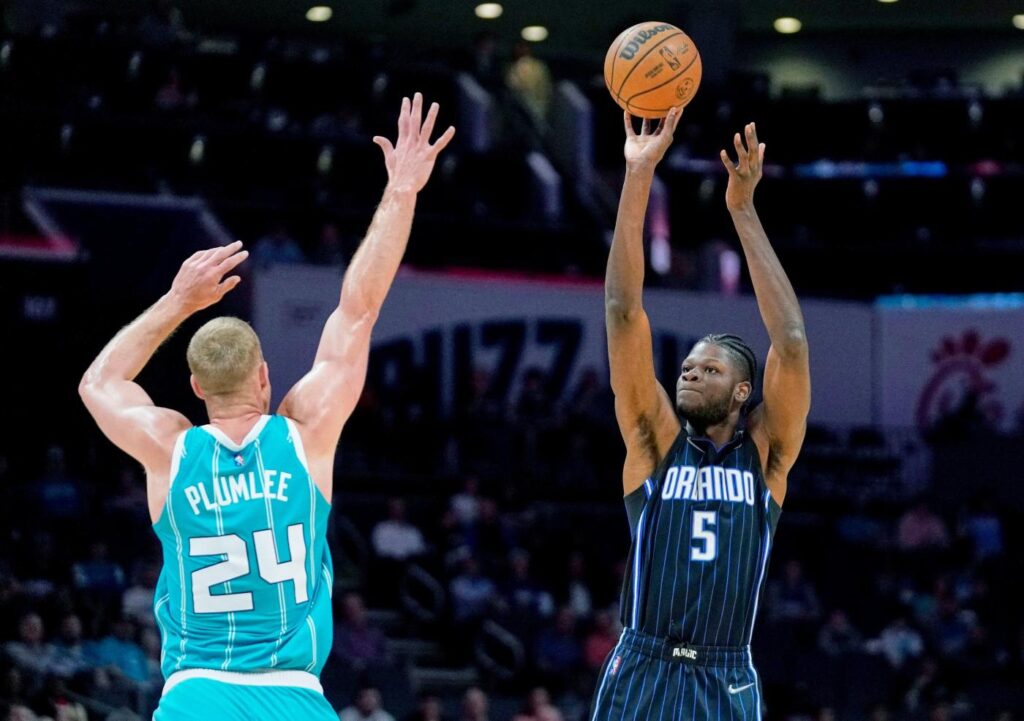
With the 2022-23 NBA season approaching, the Orlando Sentinel is unveiling a five-part series of Orlando Magic storylines to keep an eye on heading into training camp, which kicks off on Sept. 27 at their new state-of-the-art AdventHealth Training Center.
Part One: Shooting
To say outside shooting has been a struggle for the Orlando Magic in recent years would be an understatement.
The Magic’s 3-point percentage has been a bottom-six mark in each of the previous five seasons except one: 2018-19, the lone year Orlando has finished with a plus-. 500 record (42-40) since 2011-12.
They’re coming off back-to-back years finishing in the bottom-four in 3-point percentage.
The Magic understand how important outside shooting is in the modern NBA, even if their percentages haven’t reflected it.
Coach Jamahl Mosley, in multiple instances, has said his offensive philosophy involves playing with pace, space and “the pass.”
Orlando demonstrated growth in those areas in the first year under Mosley.
The Magic’s average of 11.8 seconds before taking a shot last year was an above-average mark (13th) for the first time since the 2017-18 season, according to Inpredictable. Their 284 passes per game ranked 14th.
They even had an uptick in 3-point attempts, taking 36.9 shots from beyond the arc in 2021-22 after attempting 31.8 in 2020-21.
Orlando’s problem, once again, was its accuracy, with its 33.1% 3-point percentage being the league’s third-worst mark.
The Magic addressed their need for outside shooting this offseason — directly and indirectly.
They brought back Gary Harris (38.4% on 3s) and Mo Bamba (38.1%), who were two of the team’s better shooters last year.
The late-season signing of Devin Cannady (40.5% on 3s on 7.4 attempts in five games) and drafting of Caleb Houstan (35.5% 3-point shooter at Michigan) in June should also make the Magic threats from beyond the arc.
Paolo Banchero, the No. 1 pick in June’s draft, and Markelle Fultz, who returned from a torn left knee anterior cruciate ligament, are the type of dynamic playmakers who should be able to create more paint touches and open up looks from beyond the arc.
Easier shots should lead to a higher conversation rate.
A problem for the Magic is they also struggled with those easier looks, too.
Their 36.3% 3-point percentage on “wide-open” shots from beyond the arc (nearest defender is over six-plus feet away) and 30.9% 3-point percentage on “open” shots (nearest defender is 4-6 feet away) were both bottom-four marks across the league.
It doesn’t help the Magic that the players who were taking a significant chunk of those more open 3-point shots were making them at a below-average rate, likely because of their opponent’s defensive game plan.
Orlando entered the offseason needing better outside shooting, and may still need it.
But with the Magic already having 16 players signed to standard contracts and needing to cut the rosters down to 15 before the regular season starts, they’ll have to rely on self-improvement as outside shooters.
How much has been made should become clear early in camp.
This article first appeared on OrlandoSentinel.com. Email Khobi Price at [email protected] or follow him on Twitter at @khobi_price.
()
